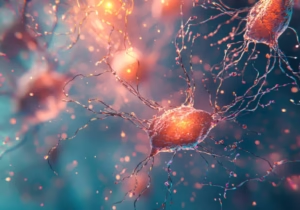Artificial intelligence field experiences rapid transformation, which requires our acceptance of adaptable ideas that transform functional capabilities. Liquid neural networks provide such potential because they use a flexible structure to adjust according to varied situations. Just like water, liquid neural networks demonstrate fluidity to respond and modify their structure based on surrounding conditions.

Liquid Neural Networks are a practical solution for solving complex problems that emerge in self-driving cars, robotics, and health treatments. Neural network learning closely resembles natural biological processes, due to which they expand AI capabilities. The upcoming analysis examines liquid neural networks from an operational viewpoint. It discusses their superiority compared to traditional artificial intelligence applications. This analysis helps to understand their usefulness for your artificial intelligence project.
What Are Liquid Neural Networks?
Liquid neural networks are a modern AI system that learns to adapt to its environment. These networks show very practical features because of their ability to adapt. Unlike rigid traditional neural networks, liquid neural networks keep transforming while being used. Their ability to adapt stems from applying mathematical equations to dynamic systems. Regular neural network patterns remain fixed because they base their operation on trained behaviors. Neural networks demonstrate flexibility by altering their responses according to input conditions, which leads to successful completion of tasks involving continuous changes in the environment. For instance, autonomous drones successfully adjust actions to bypass both animals and forest branches during flight. The main distinctions between traditional neural networks and the latest version exist as follows:
| Feature | Traditional Neural Networks | Liquid Neural Networks |
|---|---|---|
| Architecture | Fixed | Dynamic |
| Learning | Static (after training) | Continuous and adaptive |
| Ideal Use Cases | Stable, predictable tasks | Dynamic, real-time decision-making tasks |
| Computational Efficiency | High resource consumption | Lightweight and scalable |
The development of liquid neural networks takes inspiration from brain functions, as neurons in living brains work as interconnected units with their surroundings and environmental changes. The learning and adaptability of AI undergo transformation when using liquid neural networks, while developers working with new challenges find these neural networks efficient in flexibility.
How Liquid Neural Networks Work
Liquid neural networks can change their operation based on new data inputs happening in real time. The system is represented through differential equations. After training, these networks can continue to adapt to new information from ongoing inputs. Regular networks no longer modify themselves following their training period. The networks need additional training after receiving new data before they can perform effectively. Liquid neural networks are different. The system modifies its parameters to implement newly acquired information, thus helping users make swift decisions.
A self-driving car AI system requires prompt data processing of sensor information. The system requires cameras in order to perform rapid decision-making functions. Normal networks have challenges when facing unexpected obstacles during operation. Each emerging system input leads Liquid Neural Networks to adapt their learning behaviors, thus enabling them to handle constantly changing urban conditions. The neural network learning model is based on state-space mathematics that allows them to incorporate temporal elements. Processing new information occurs with context-sensitive analysis because the system combines these elements with real-time modifications. The “liquid” character stems from such capabilities, which distinguish them from conventional fixed models.
Benefits of Liquid Neural Networks Over Traditional Models
Liquid Neural Networks provide flexibility that makes them more appealing to traditional models regarding their overall advantages. The series of advantages from liquid neural networks makes them attractive for use in advanced AI applications. Let’s look at the main benefits:

Real-Time Adaptability
The real-time adaptability capability stands as a main advantage of using liquid neural networks. The trained model from traditional neural networks loses its effectiveness after training because of environmental changes. This becomes a serious challenge when dealing with dynamic intense operations, including autonomous driving and fraud detection systems. Liquid neural networks deliver their best performance through their instant ability to adapt to new information, resulting in current, up-to-date predictions.
For Example
Weather and traffic patterns can change rapidly within short periods in autonomous vehicles. The liquid neural network system automatically modifies its model structure to match current environmental conditions. The system’s AI makes its safest possible choices because of this parameter adjustment method.
Efficiency and Lightweight
Elliptical neural networks function as computing power hogs because they demand substantial hardware resources for operation. The limited resources found in edge computing devices, together with IoT systems, create a major challenge for system deployment. Liquid neural networks enable lightweight operation and scalability for their design. These systems deliver maximum performance at a reduced computational requirement level. The design makes these systems suitable for mobile applications as well as real-time applications.
Real-World Use Case
The longevity of power supply represents a vital requirement for wearable health instrument systems. Real-time health monitoring functions due to the implementation of Liquid Neural Networks. The system remains free from excess processing load while their operations proceed. The model uses minimal energy to adapt to new patterns, which include physical activity and heart rate changes by users.
Improved Decision-Making in Complex Environments
Complex time-sensitive problems are the target application domain for which liquid neural networks have been designed. Their ability to evolve using current inputs enables them to make superior decisions when dealing with unpredictable situations. These systems demonstrate top-level capability to forecast stock market behaviors. The systems are efficient for robotic arm automation in unpredictable surroundings. These systems work effectively on tasks that need ongoing adaptation because of their capability to change dynamically.
For Example:
Linear neural networks improve robotic systems when dealing with environmental changes. The execution of surgical robots must adjust automatically when the body of the patient demonstrates fine alterations. Under typical operating conditions, a traditional methodology takes too long to adapt to current events. This type of network can instantly update its operational behavior after receiving new information. A superior level of precision combined with success rates results from the system design.
The Main Applications of Liquid Neural Networks Include
1. Self-Driving Cars

Liquid Neural Networks serve as an efficient neural network system for self-driving cars because they need to analyze data obtained from sensors along with cameras and radar to generate safe operational decisions, yet traditional neural networks struggle when facing sudden environmental alterations such as adverse weather conditions or unexpected road objects. The system demonstrates instant adjustment capability regarding these modifications.
The network provides instant responses when a sudden person appears in front of the self-driving car. The system demonstrates an instant capability to analyze provided information. Starting the protocol to safely bypass the individual. By constantly learning new data, the system becomes prepared to handle any driving scenario without requiring updates.
2. Robots in Changing Environments
Liquid neural networks serve robotics by enabling quick responses to changing environmental conditions when robots complete assembly work, deliver items, or work in surgery.
When an operating surgeon utilizes their tools during a surgical procedure, the patient’s body occasionally shifts, and Liquid Neural Networks enable the robotic system to immediately adjust its actions for maintaining both safety and procedural precision. Through active learning, the robotic system develops effective processing capabilities for complex tasks.
3. Personalized Healthcare and Health Monitoring
The healthcare industry transforms through liquid neural networks due to their ability to provide continuous medical observation using real-time sensor and wearable device data collection. A wearable system utilizes its heart rate monitoring capabilities together with motion tracking to detect heart irregularities so patients or medical staff receive swift alerts. The networks gain their expertise from observing patient health modifications to deliver personalized medical care.
4. Predictive Maintenance in Industries
Due to analyzing operational data in real-time industrial systems can detect equipment failure indicators so maintenance costs decrease before equipment breakdown events. phối these networks to deliver superior predictive functions which operate above traditional systems in production facilities and drilling sites. False operational data entered into continuous processing enables better predictive capabilities that lead to enhanced operational efficiency.
Challenges and Limitations of Liquid Neural Networks
1. Computational Complexity
Liquid neural networks provide outstanding adaptability because of their features. Time-sensitive decision processes obtain their best performance from these systems. The high processing requirements represent the main problem these systems encounter. Liquid Neural Networks require high levels of computer capacity more than traditional deep learning networks but still need sufficient processing power to operate efficiently. The fundamental requirement to operate liquid neural networks stems from their merging of continuous learning operations with adaptive network designs.
The systems which process information need to manage large-scale data flow. The models run operation modifications in an automatic simultaneous manner. The practical use of liquid neural networks necessitates access to vast hardware resources mainly because of their resource-intensive nature. The solution requires exceptional hardware models that incorporate quantum computing processors into their design. Applications which need rapid decision execution depend heavily on powerful computing power due to present needs.
2. Data Quality and Availability
The system encounters difficulties because of inadequate database information. The learning processes of liquid neural networks function through real-time data streams. The processing of incorrect or incomplete data by the network might reduce its adaptive functions. The process of adaptation will be negatively influenced by any form of incomplete or biased data available. The improper functioning of a wearable medical sensor can deliver faulty health data to patients. The incorrect data could harm the patient’s health tracking mechanism.
The correct operation of neural networks depends on the proper integration of accurate and representative data. The adaptation process proves especially hard within industries of healthcare and robotics. Getting real-time data and dealing with sparsity remain difficulties in these particular domains.
3. Integration with Existing Systems
The integration of liquid neural networks becomes difficult when trying to add them to existing AI systems and traditional infrastructure. Real-time adaptiveness represents a key advantage of their operation. The network architecture has to be different for these systems. The required system support for these networks does not match standard AI model support systems.
The present-day AI system of autonomous vehicles functions using static rule-based programming. The complete restructuring of the system during the transition to an adaptive neural network has proven challenging for integration purposes. The Logger Statement systems that benefit from liquid neural networks present a significant challenge due to the complex requirements of updating current infrastructure.
4. Ethical and Regulatory Concerns
The implementation of liquid neural networks induces numerous difficulties regarding ethics and regulatory compliance, which accompany most state-of-the-art technological advancements. Such unpredictable system transformations require organizations to ensure absolute transparency along with full accountability in their decision-making processes. Autonomous driving applications, together with healthcare, require AI systems to determine situations that produce crucial implications for users.
Governments, alongside organizations, need to develop definite legislation to manage ethical usage of these systems, which will preserve both user security and privacy. The use of liquid neural technology will likely spark increasing debates about its ethical standpoints. The ability of Liquid Neural Networks to transform shapes finds its essence in this conceptualization:
“Adaptability is the hallmark of intelligence, and Liquid Neural Networks epitomize this trait, bringing AI closer to human-like decision-making in real time.”
— Inspired by the principles of adaptive AI
Future Directions and Research Prospects in Liquid Neural Networks
1. Improvements in Self-Learning Abilities
The most anticipated application of liquid neural networks entails their ability to achieve superior autonomous learning systems. The current systems need considerable human involvement throughout their training processes. They also need fine-tuning. Neural networks will eventually achieve the capability for self-learning operations. The networks possess the ability to learn perpetually from their environment without demanding any external training process.
AI technology will face a major revolution through the implementation of this breakthrough concept. A self-learning robotic system exists that operates independently from supervised data streams and update requirements. The system would learn from real-time interactions with new circumstances as it adapted to independent changes. A self-operating system functions well to meet requirements in space exploration and related fields. These locations have unstable environments. The collection of data sometimes proves to be inadequate.
2. Combining Liquid Neural Networks with Other AI Models
Researchers explore the integration of liquid neural networks with other current AI systems as a promising field of development. Reinforcement Learning and Deep Learning represent two of the included AI architectures. Hybrid models should combine the best features between different approaches. Such a combination would produce an advanced AI system. A system built in this manner proves able to tackle a wide spectrum of operational requirements. Real-time adaptability can be managed by liquid neural networks according to design. Deep learning models operate most efficiently when handling tasks that need extensive understanding of static information patterns.
These combinations of AI approaches will produce innovative applications that need the advantages of both adaptive control and deep analytical capability. Autonomous drones navigate complex environments. Medical technology equipment uses intelligent processing to detect immediate alterations in patient health status. AI-driven customer service systems reply differently based on how needs from customers transform throughout time. The revolutionization of industries through hybrid AI models appears in various examples illustrated above.
3. Better Efficiency with Quantum Computing

Liquid neural networks benefit from growing advancements that create new opportunities for their fusion with quantum computers. Quantum computing systems excel in mathematical operations by using an improved exponential rate when compared to classical computer approaches. The processing speed as well as model training efficiency improves through these strategies. Liquid Networks would have better real-time application prospects due to this improvement. The resource-hungry applications among them include autonomous driving software. The need to make instant choices depends heavily on achieving maximum speed when handling this situation.
The current development of quantum computing remains basic. The combination potential of quantum technologies with liquid neural networks exists at an exceptional level. Quantum algorithms would make neural networks operate at higher levels of power. These systems would develop enhanced scalability capabilities. Such capabilities would let the networks process complex problems at both high speed and increased precision.
4. Growth in Healthcare and Personalized Medicine
AI remains an important factor in medical services. Personalized medicine will rely essentially on neural networks advancing into the core technology base. AI networks maintain constant adjustments according to the health information of each individual. These systems can provide live, time-adjusted recommendations about treatment selection. The recommendations would include lifestyle modifications that would specifically suit each individual patient.
Such predictive systems will be accessible in healthcare fields. The disease identification capabilities of liquid neural networks occur at an early disease detection stage. Heart disease, together with cancer, constitutes possible conditions that these networks could detect. The system reaches this goal through regular vitals monitoring of its patients. Such networks possess the ability to scrutinize current health conditions. The network system functions by aligning itself to recognize both present and future health trends that occur within each person. Such system adaptability leads to better healthcare service quality. Liquid neural networks have the capability to detect health issues at early stages, which leads to life-saving potential.
5. Ethical AI and Clear Decision-Making
Tesla will need to adopt stronger ethical frameworks because their technology capabilities are expanding rapidly. AI systems must operate with enhanced visibility into their decision processes as their applications expand in the market. Organizational systems that adapt their operational methods become harder to comprehend as time progresses. Future investigations must establish methods for these networks to perform their operations with transparency and fairness.
AI system transparency has begun receiving focused development efforts from engineers. The complexity of liquid neural networks continues to increase as they develop. The essential task will be identifying ways to understand AI system decisions. Development teams explore new interpretability methods to let users understand what inner mechanics operate inside these systems. Time-to-time adaptation of these systems makes it essential to establish their functioning. The implementation of this artificial intelligence process requires absolute importance in crucial sectors such as healthcare, which directly influences patient outcomes.
The Future of Adaptive AI Systems
Liquid Neural Networks represent a recent artificial intelligence system that the demonstrates adaptability together with flexibility and operational efficiency for solving practical issues. These systems demonstrate effective behavior when used in self-driving vehicles, robots, healthcare services, and factory automation systems. The systems allow AI to perform real-time learning for creating intelligent artificial intelligence systems. Continuous self-learning holds an exciting appeal. The use of different AI models enables innovative distribution of solutions. The field of quantum computing shows early indications of advancing rapidly. The network technology may experience these capabilities along with others as part of future development. The field continues its development while technology evolves at a constant rate. These networks, including Liquid Networks, will transform businesses beyond expectations into groundbreaking advancements.
The adoption of liquid neural networks faces barriers related to advanced computing needs as well as issues with information quality and ethical concerns that require solutions. The resolution of existing problems will lead to Liquid Networks developing into beneficial industrial and societal technology.
There exists substantial possibility that liquid neural networks will transform the field of artificial intelligence in the future. People working in this area need to follow these evolving changes. People in this field must consider system integration as part of their project work to maintain an advanced technological position.
Call to Action
Liquid Networks functions as an adaptive AI system that will help you understand its application towards your projects. People must keep updated about new industry trends combined with technological advancements. Our present marks the creation of artificial intelligence history and brings excitement for anyone involved in its development.




